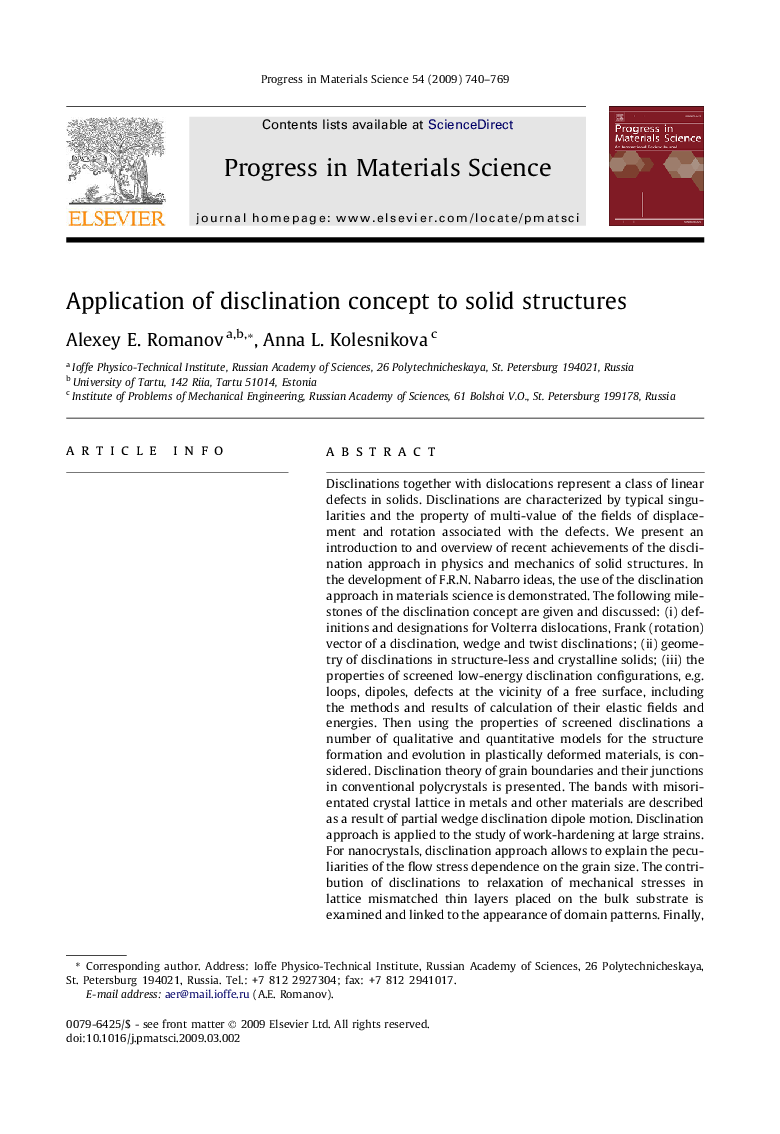| Article ID | Journal | Published Year | Pages | File Type |
|---|---|---|---|---|
| 1655985 | Progress in Materials Science | 2009 | 30 Pages |
Disclinations together with dislocations represent a class of linear defects in solids. Disclinations are characterized by typical singularities and the property of multi-value of the fields of displacement and rotation associated with the defects. We present an introduction to and overview of recent achievements of the disclination approach in physics and mechanics of solid structures. In the development of F.R.N. Nabarro ideas, the use of the disclination approach in materials science is demonstrated. The following milestones of the disclination concept are given and discussed: (i) definitions and designations for Volterra dislocations, Frank (rotation) vector of a disclination, wedge and twist disclinations; (ii) geometry of disclinations in structure-less and crystalline solids; (iii) the properties of screened low-energy disclination configurations, e.g. loops, dipoles, defects at the vicinity of a free surface, including the methods and results of calculation of their elastic fields and energies. Then using the properties of screened disclinations a number of qualitative and quantitative models for the structure formation and evolution in plastically deformed materials, is considered. Disclination theory of grain boundaries and their junctions in conventional polycrystals is presented. The bands with misorientated crystal lattice in metals and other materials are described as a result of partial wedge disclination dipole motion. Disclination approach is applied to the study of work-hardening at large strains. For nanocrystals, disclination approach allows to explain the peculiarities of the flow stress dependence on the grain size. The contribution of disclinations to relaxation of mechanical stresses in lattice mismatched thin layers placed on the bulk substrate is examined and linked to the appearance of domain patterns. Finally, disclination models for the structure and properties of nanoparticles are presented. These models treat the pentagonal symmetry of micro- and nanoparticles and nanorods of materials with FCC crystal structure and explain stability and relaxation phenomena in such pentagonal objects.
